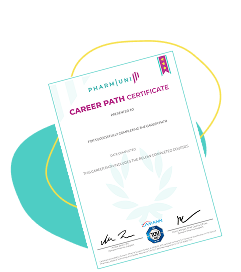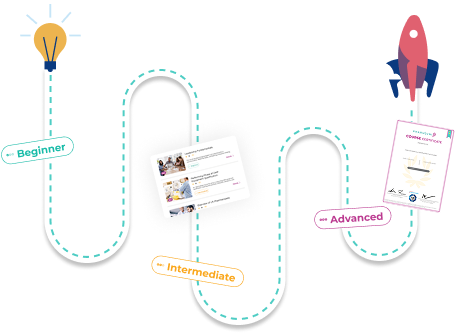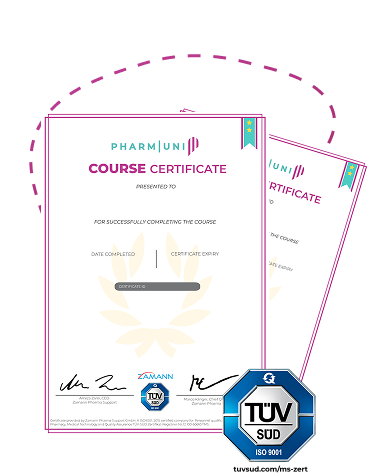Unlock the potential of your career in the Pharma industry with our online courses and qualifications.

Pick a career path, follow its guided course roadmap, and secure industry-verified credentials in a few months.

Earn career credentials from industry leaders that demonstrate your expertise.
Follow a 5-7 course sequence for your desired role—aligned with global GMP/GxP standards.

Choose a role—GxP Auditor, Regulatory Affairs, Pharmacovigilance, QA—and follow a step-by-step learning path of 5–7 expert courses.
Earn certificates along the way, plus a Career Path certificate to demonstrate EMA/FDA GMP readiness.
Join thousands of professionals learning with flexible monthly or annual plans.
Role-based paths, expert courses, dual certificates—fast.
Browse the directory and choose the pharma job that matches your goal.
progress through a clear beginner-to-advanced course order.
download a certificate for every course and an additional credential when you finish the full path.
Stay focused, save time and showcase credentials with one subscription.
sequenced learning paths guide you step-by-step, eliminating course-selection confusion.
every path is built around a specific pharma job, keeping learning goal-oriented and relevant.
a single monthly or yearly plan unlocks the full catalogue, making continuous learning cost-effective.
get 1-to-1 guidance from seasoned pharma mentors, a service proven to boost career outcomes.

Each certificate includes a unique validation code, instantly checkable on our public portal. Finish a full 5–7 course Career Path to unlock an additional certificate — built under Zamann’s TÜV SÜD ISO 9001-certified quality system, trusted by global regulators and employers.



Pharmuni Premium gives you 50+ industry-aligned courses, credentials, VIP coaching, job tools trusted by professionals and more—for less than the cost of a single in-person training session.
Monthly: €39.99/mo
Annual: €33.25/mo (Save €80.88 yearly)
(most popular with immigrants)
We use cookies to improve your experience on our site. By using our site, you consent to cookies. Privacy Policy
Manage your cookie preferences below:
Essential cookies enable basic functions and are necessary for the proper function of the website.
These cookies are needed for adding comments on this website.
Google Tag Manager simplifies the management of marketing tags on your website without code changes.
These cookies are used for managing login functionality on this website.
Statistics cookies collect information anonymously. This information helps us understand how visitors use our website.
Google Analytics is a powerful tool that tracks and analyzes website traffic for informed marketing decisions.
Service URL: policies.google.com
Clarity is a web analytics service that tracks and reports website traffic.
Service URL: clarity.microsoft.com
Marketing cookies are used to follow visitors to websites. The intention is to show ads that are relevant and engaging to the individual user.
Facebook Pixel is a web analytics service that tracks and reports website traffic.
Service URL: www.facebook.com
LinkedIn Insight is a web analytics service that tracks and reports website traffic.
Service URL: www.linkedin.com
You can find more information in our Privacy Policy and Privacy Policy.